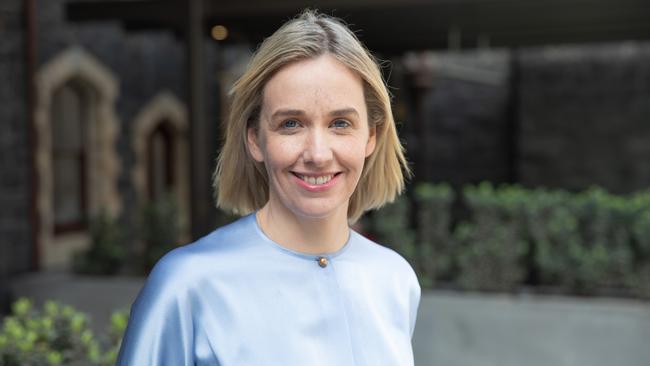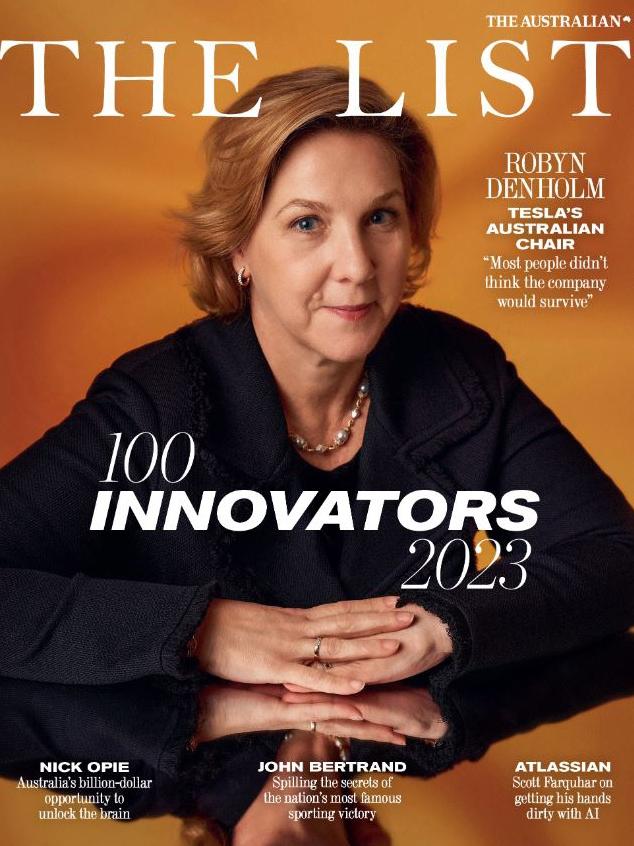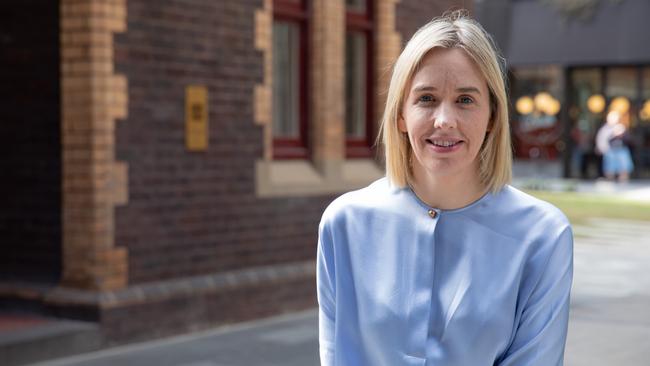‘Mind-blowing’: Meet the AI guru shaking up Telstra
Orla Glynn never set out to be at the cutting edge of Australia’s technology revolution.

Growing up in rural Ireland in the 1990s, surrounded by farms in the rolling midlands a few hours south of Dublin, Orla Glynn wanted to be an artist. Defying her parents’ push to move deeper into maths, she pursued art history and even dabbled in a bit of archaeology.
Today Glynn runs a team of hundreds of top-end programmers, coders and tech engineers a million miles away in Melbourne. She is responsible for integrating artificial intelligence into every part of Australia’s biggest telco.
It’s a formidable job ahead for Glynn and her team, but it stands to change the way Telstra fundamentally works. Cutting edge AI and machine learning promises to make Telstra faster and more responsive to customers. The technology will work silently behind the scenes making sure millions of mobile calls have the best possible connection to phone towers. Importantly, the technology keeps ahead of scam calls, cutting them off before they even get to your phone.

The List: 100 Innovators 2023 launches online and in The Australian on Friday, September 15.It is a celebration of Australia’s boundary pushers and fierce innovators.
The List caught up with Glynn while she was on the road in San Francisco, part way through a study tour of some of the leading global players in AI.
Glynn had just come off a string of packed days filled with briefings, insights and a glimpse into the future from some of the world’s leading AI labs as well as Telstra’s own tech partners.
Names include Microsoft, Amazon’s AWS, power chip specialist Nvidia, as well a collection of AI start-ups across Silicon Valley. On the day we caught up, Glynn had just spent a marathon day at California’s home of tech teaching, Stanford University. She had literally spent the week feasting on the future of technology.
“Apologies if I’m not making sense,” she says half-jokingly, but half-serious. “I haven’t had time to get my brain sorted out after all the incredible stuff I’ve seen.”
She has been given a sneak peek at where generative AI – that produces images, sound and video – is going. Images and life replicas of people could be generated with the most basic of English commands. Voice and conversation, too, were eerily lifelike.
But much of her briefings had more weighty themes of ethics and how to make sure AI is safe for everyone. Her session at Stanford’s Human-Centered AI Institute focused on where the boundaries of “responsible AI” are now being pegged. Glynn is seeking to make sure she can bring world-leading practice around AI safety into Telstra. But with technology changing so fast this will mean policies and procedures, now being built from the ground up, will need to look ahead.

AI has been around in one form or another for decades and is already being used in our daily lives from search to smartphones. Our cars now talk to us as much as smart speakers. But it was the release of OpenAI’s ChatGPT late last year that changed everything. This unleashed the potential of AI, unlocking the power of supercomputing and highly complex language models. The interface puts AI in everyone’s hands – not just the well-funded researchers, tech boffins, or big business. The release set off a multibillion-dollar race between Silicon Valley’s biggest players: Google, Meta and Apple. But the consensus is Seattle’s Microsoft, which partly owns OpenAI, is winning.
Glynn says the world is now at that tipping point where low-cost but massive computer processing power has been able to consume huge amounts of data and this has been merged with a platform that offers a simple user experience. She points to the shortening ratios of the take-up to show how it fired the world’s imagination.
It took accommodation platform Airbnb more than two-and-half years to get the first million customers and Facebook took almost a year. Social media site Instagram took a couple of months. But ChatGPT hit a million users in just days. “What we’re seeing here with AI is what they’re calling it, the iPhone moment – but it feels to me more like the internet moment,” Glynn says.
“If you think about how we apply AI into every industry, like telco, energy, finance, health care, governments, this curve now has endless possibilities.”
There’s more to come, with bigger models that will soon create the next stage of AI, part of what she had a sneak preview of in recent days. This ranges right up to avatars that look and speak just like humans. “It’s phenomenal,” she says. “The visuals and creativity are unbelievable.”
Foray into the future
Glynn describes her own journey into tech as a little disjointed. Growing up in rural Ireland she leaned more heavily into arts over maths but later compromised, studying business and law at Dublin’s University College. From there it was chartered accounting and high-end finance before moving to Australia during a working holiday with Westpac in Sydney in 2008.
But at National Australia Bank in Melbourne, last decade, Glynn’s real tech shift happened, as she had an opportunity to move from pure institutional banking into data and analytics. Her AI experience was turbocharged at a stint with energy major AGL before Glynn joined Telstra at the start of last year – where she is now the head of data, AI transformation and adoption.
There she has been leading a team of more than 600 data professionals, with the focus on how they are going to adopt AI into the organisation. The emphasis is more on the human interaction and less on the technology side.
“I’ve found what I loved working on was the intersection of people problems, technology problems, and then the commercial, and making it all work – so dealing with all that complexity.”
She says tech doesn’t have to be a closed-off world: it should be seen as an adjunct or an option to most careers.
“I’m not a deep technical expert in reinforcement learning or fine tuning of AI models,” she explains. “It’s just the learning mindset and curiosity that’s important in this era. One of the standouts for me during [the tour] was at Microsoft and they say: ‘Be a learn-it-all, not a know-it-all’.”
For younger people looking to break into tech today, chances are they probably already know more about AI than people already in the profession. But AI itself won’t necessarily be the pathway, Glynn says. In many ways AI stands to complement careers.
“I think for students, AI will probably evolve to be part of everything they are already setting out to do.”
Coding is changing too, she adds. Large language models mean most people won’t have to have deep knowledge of coding.
As for workers, she acknowledges fears exist about AI taking away jobs, particularly across professional or white collar fields.
Glynn urges people to look at the technology another way. “If you embrace it, your actual job will become so much better because it’s not going to replace your life. Nobody’s actually talking about replacing jobs, what we’re talking about is actually augmenting and enhancing your work.”
More broadly, the technology has the potential to redesign how we work or liberate many from process driven tasks.
What’s coming “is just mind-blowing on every possible level”, but it is critical to get the fundamentals right, she says.
“This is going to be incredible. Hopefully we can design it in a way that leads to a better world.”
The List: 100 Innovators 2023 launches online and in The Australian on Friday, September 15.It is a celebration of Australia’s boundary pushers and fierce innovators.






To join the conversation, please log in. Don't have an account? Register
Join the conversation, you are commenting as Logout